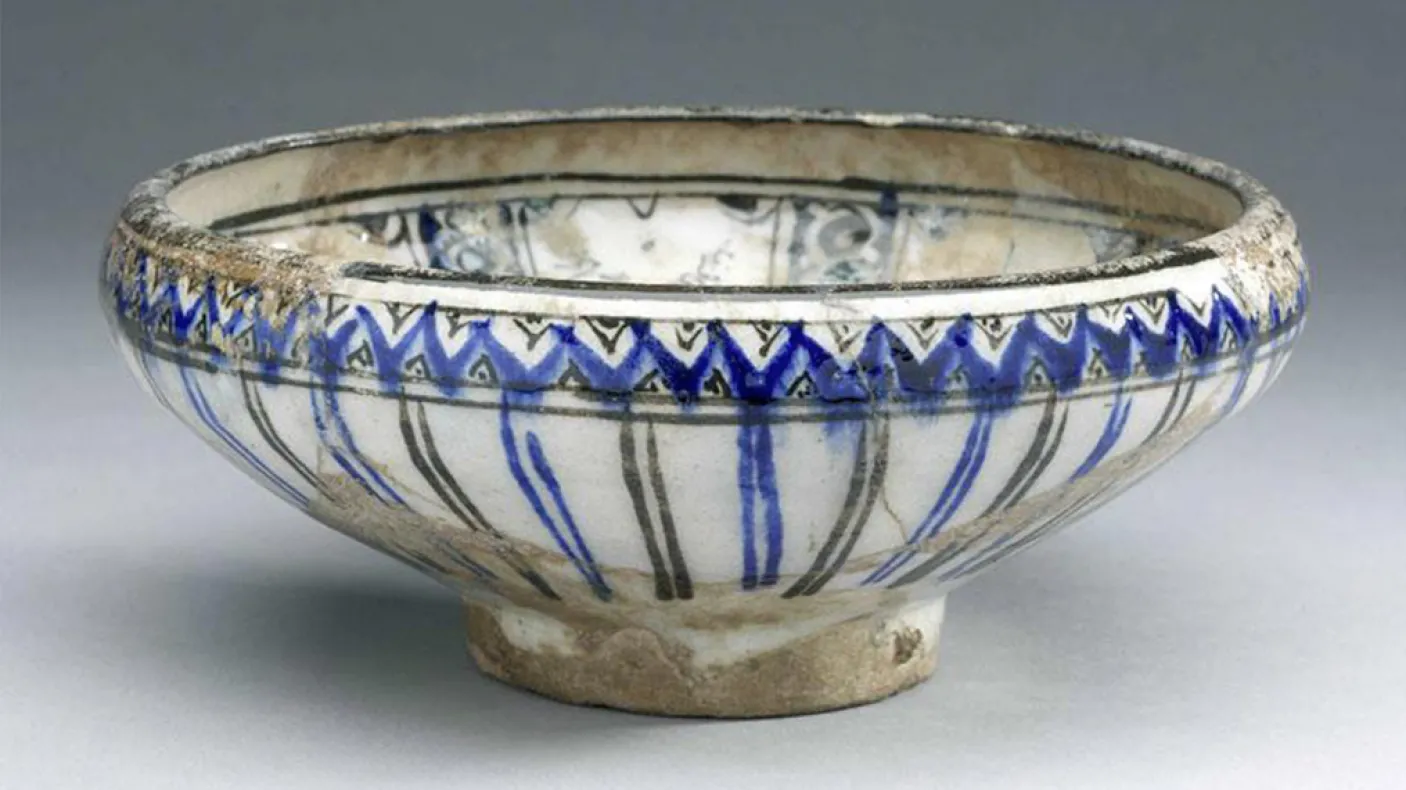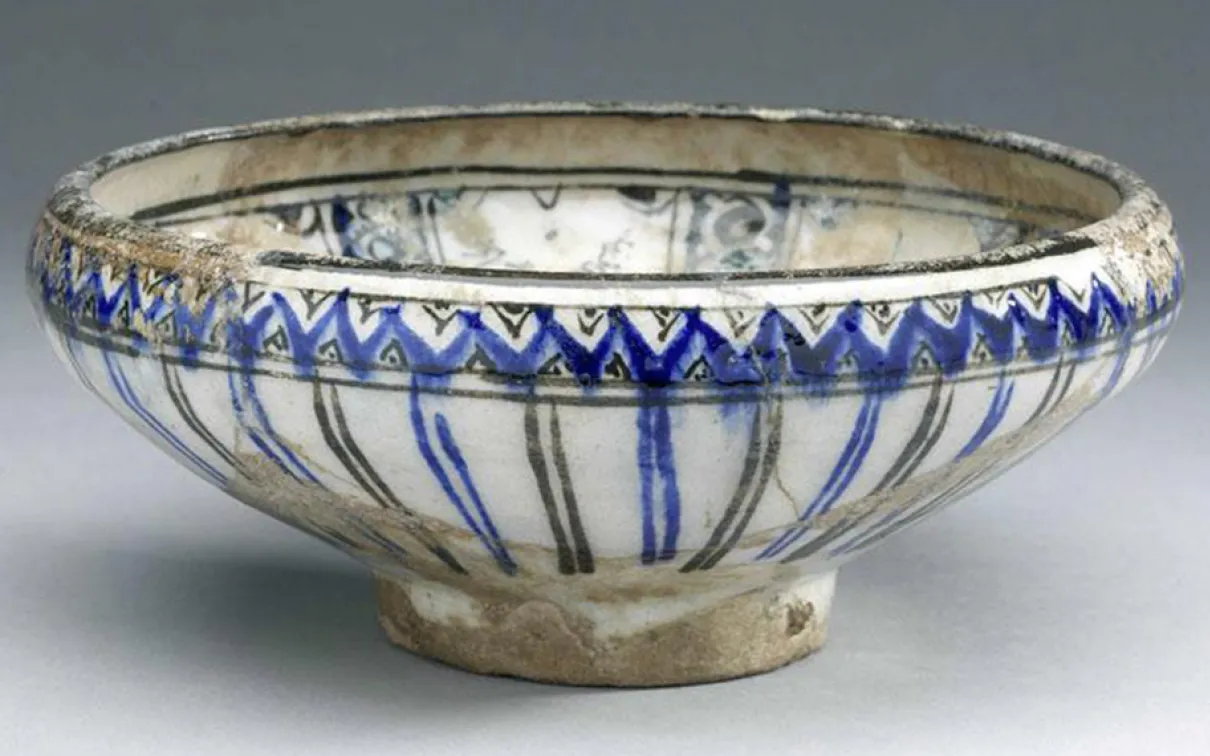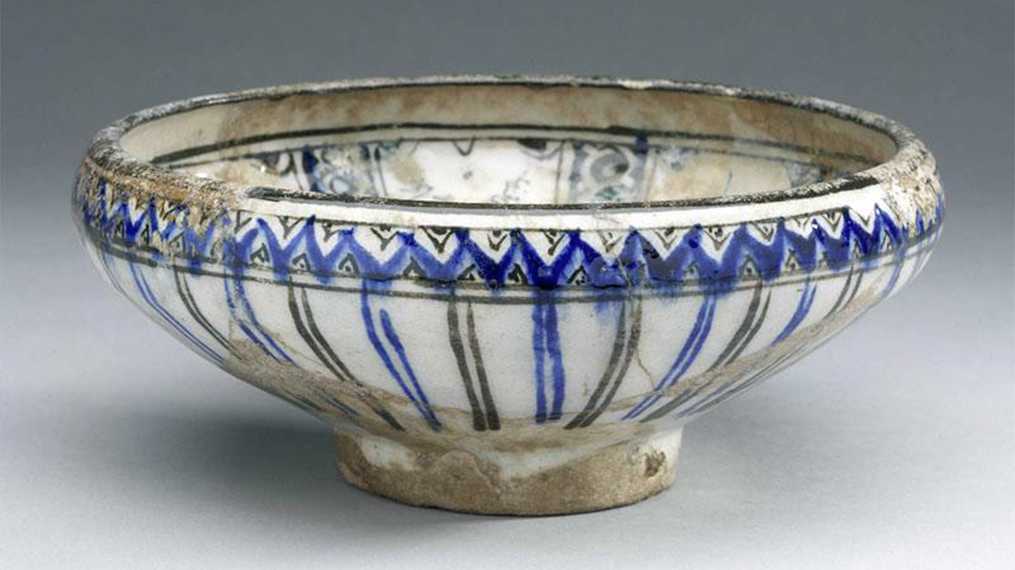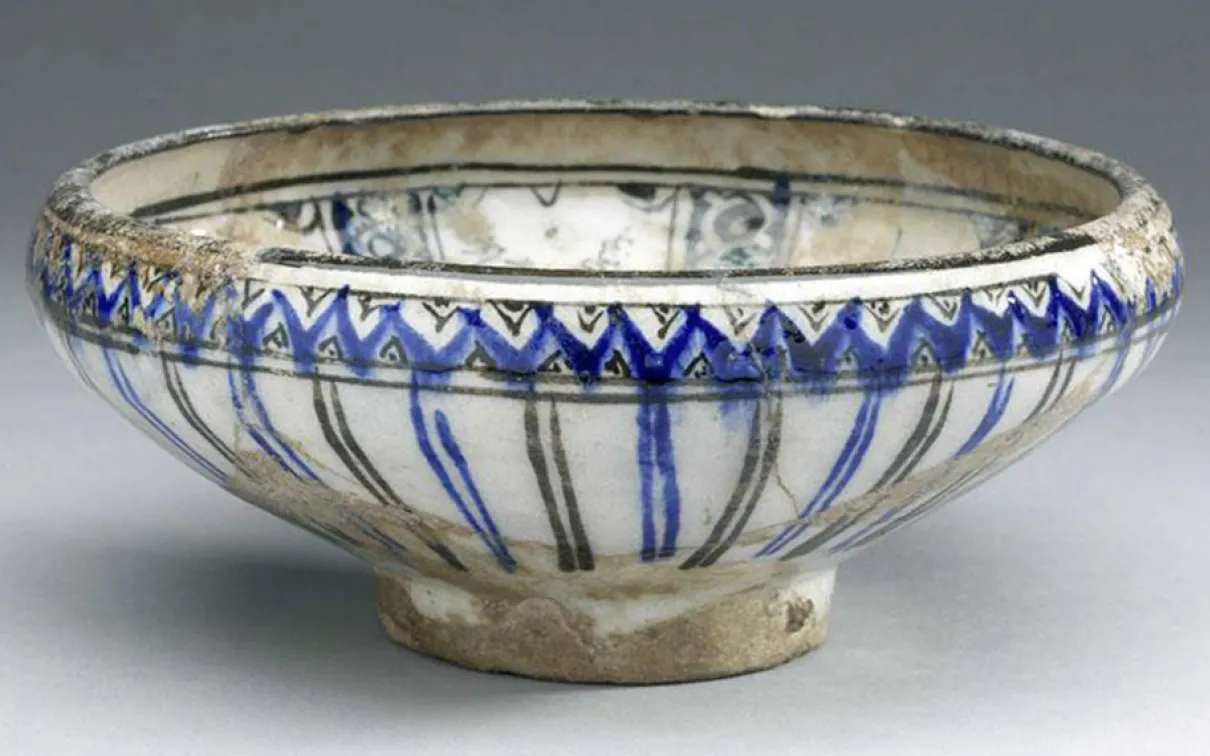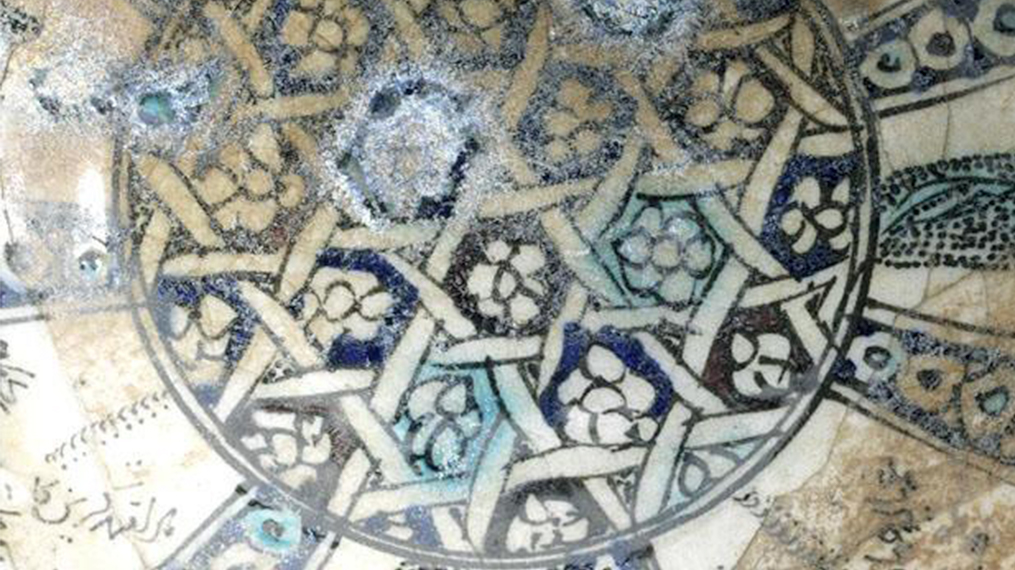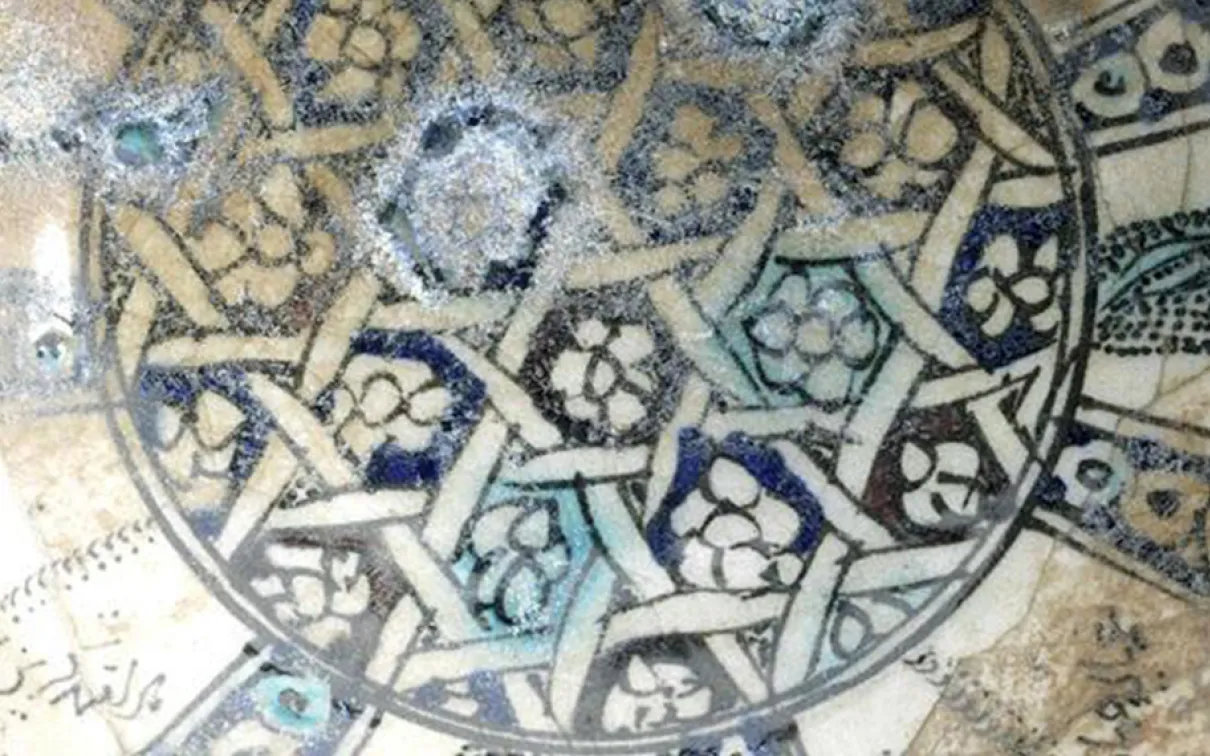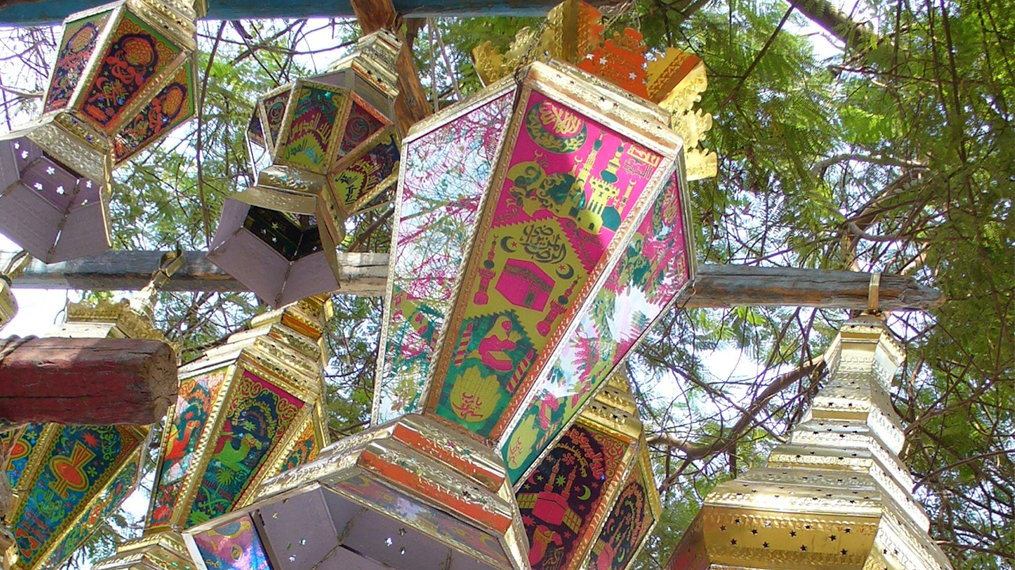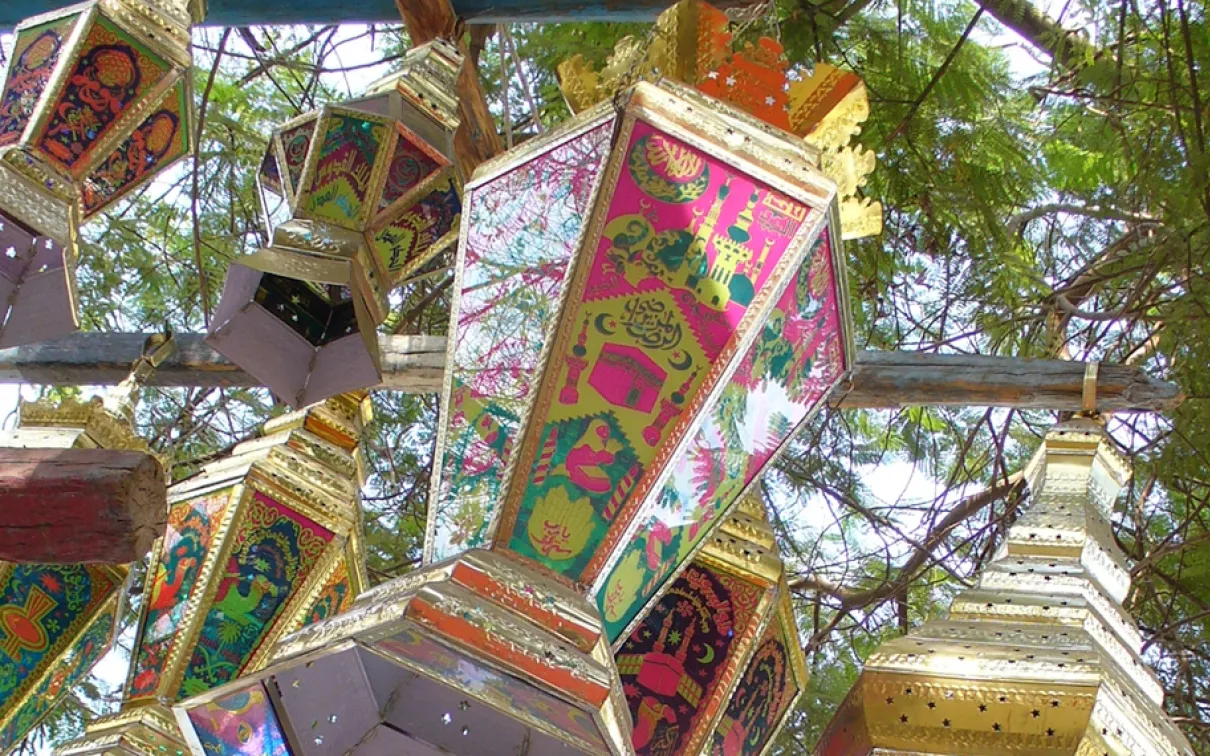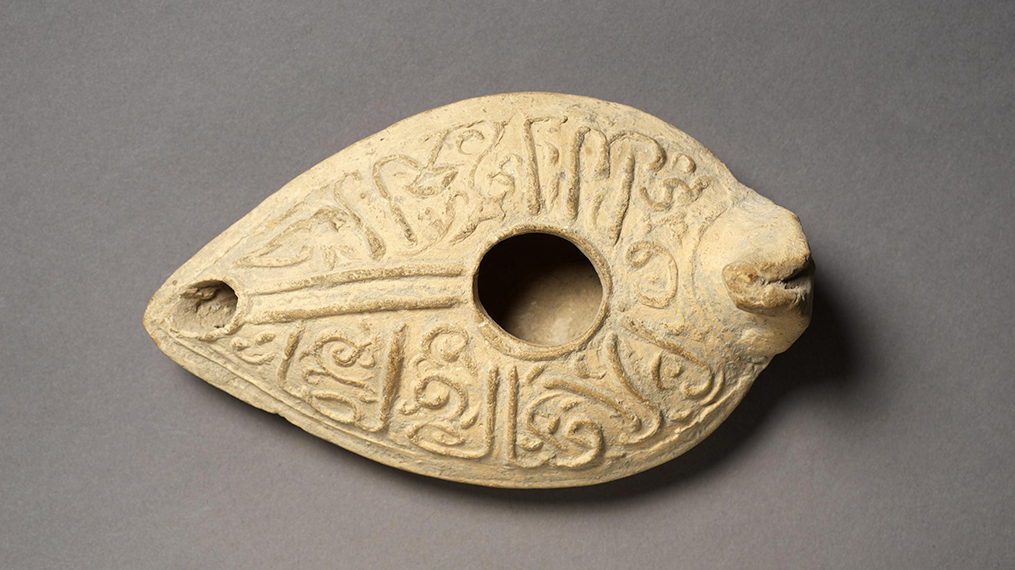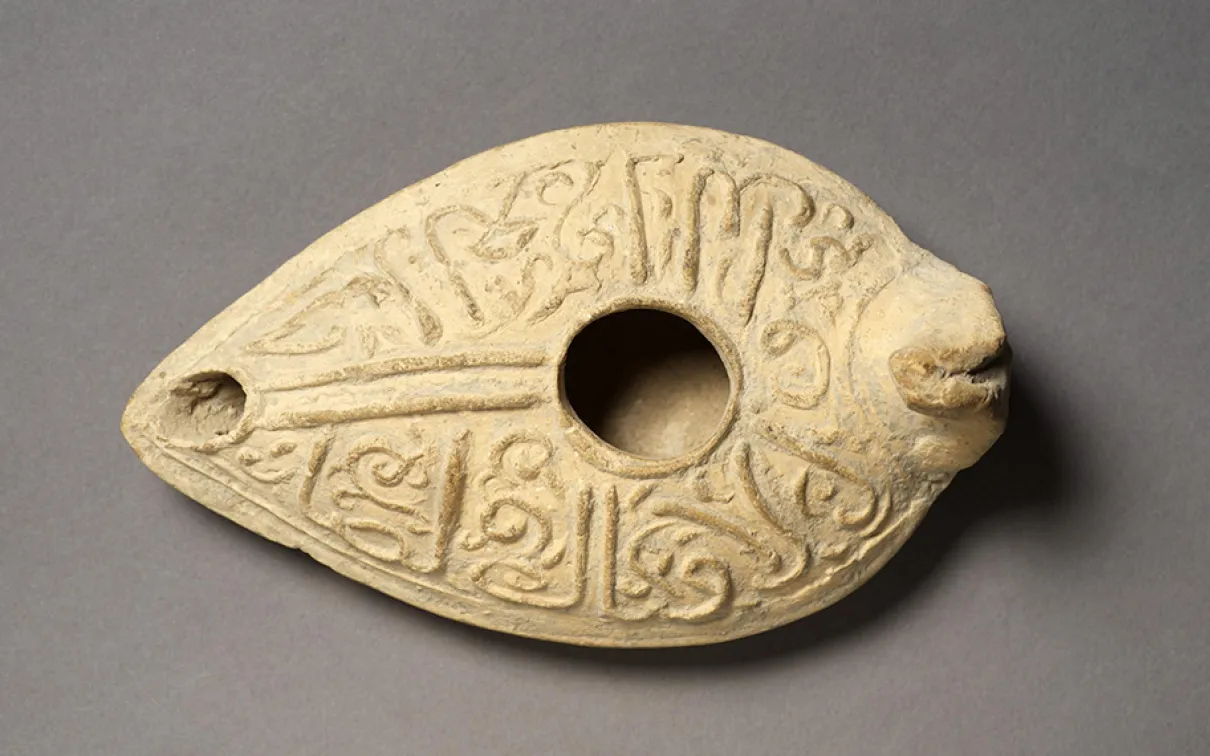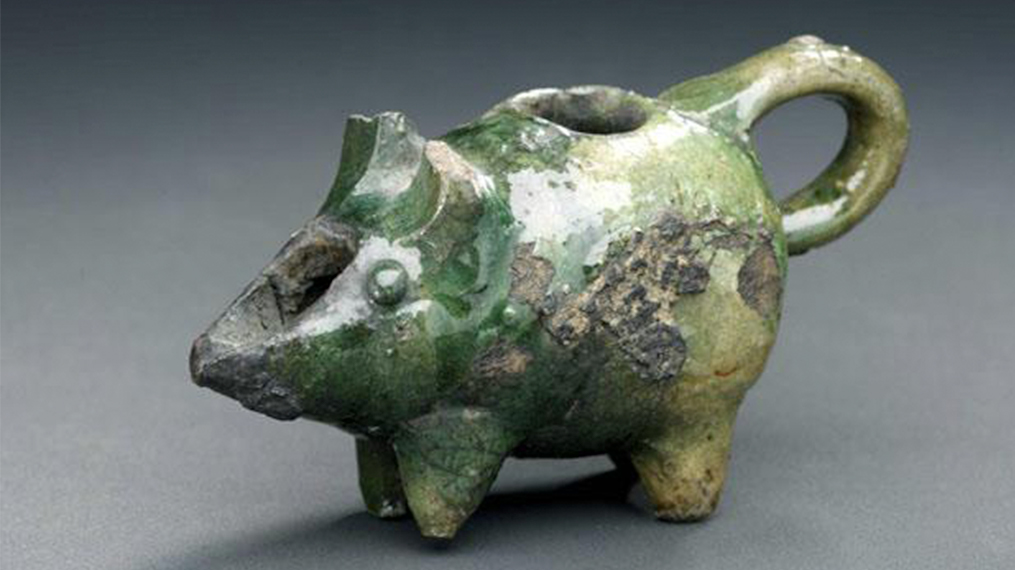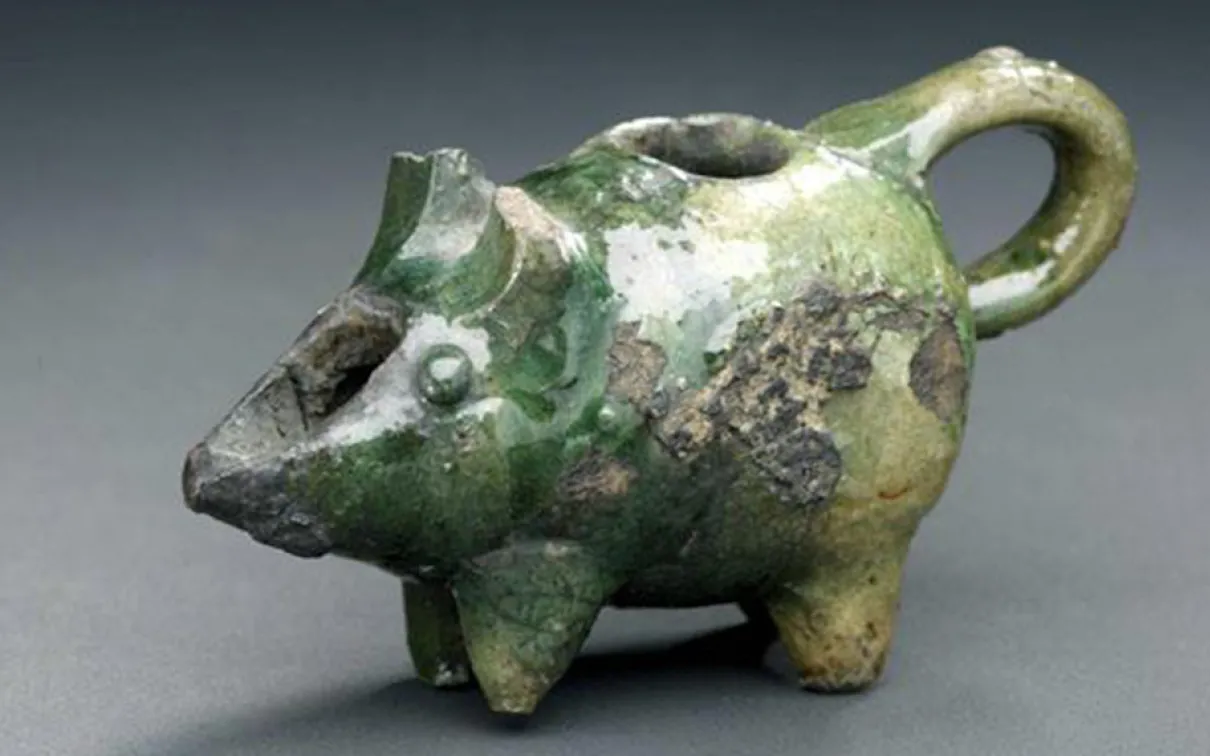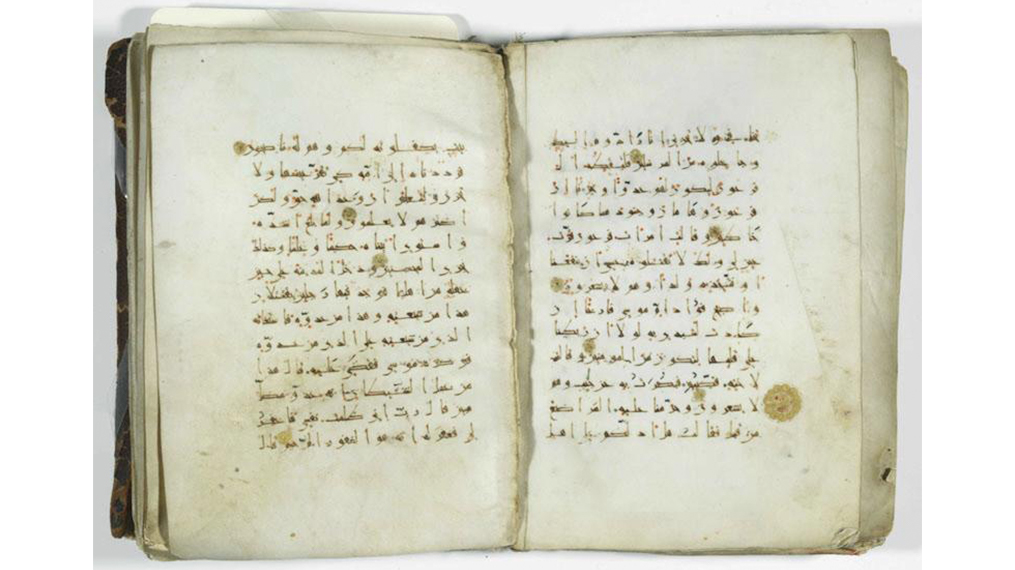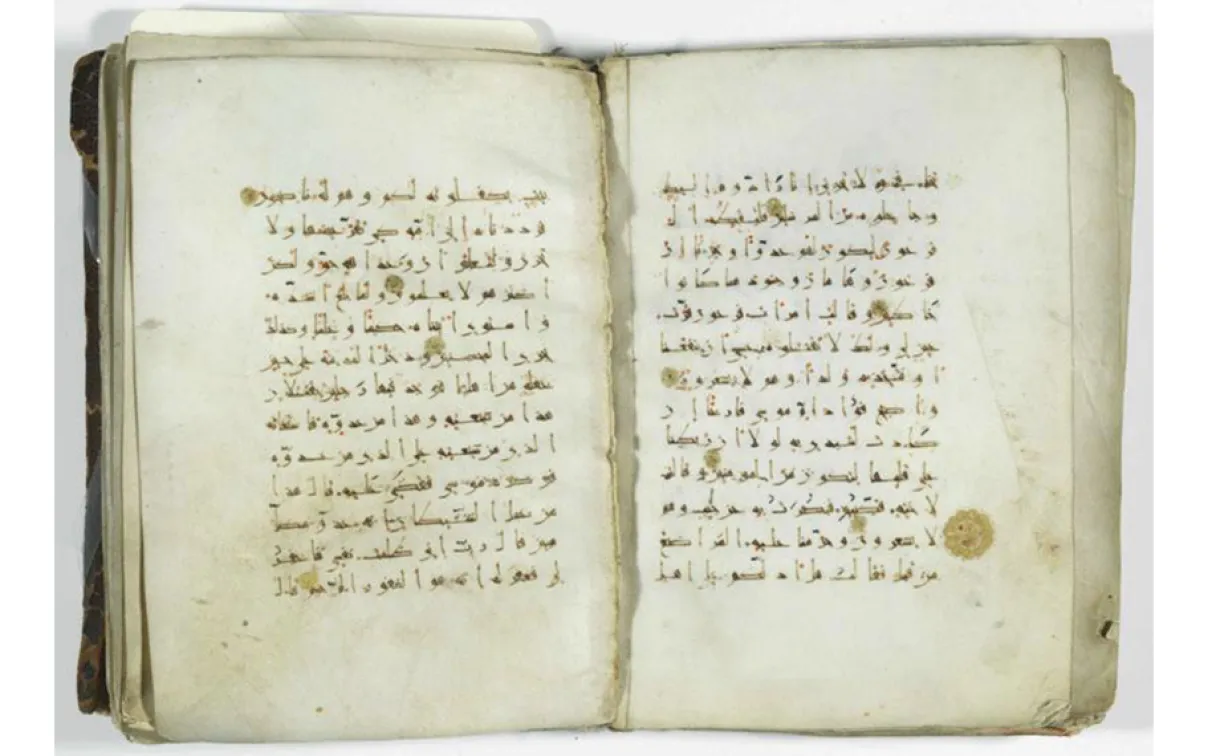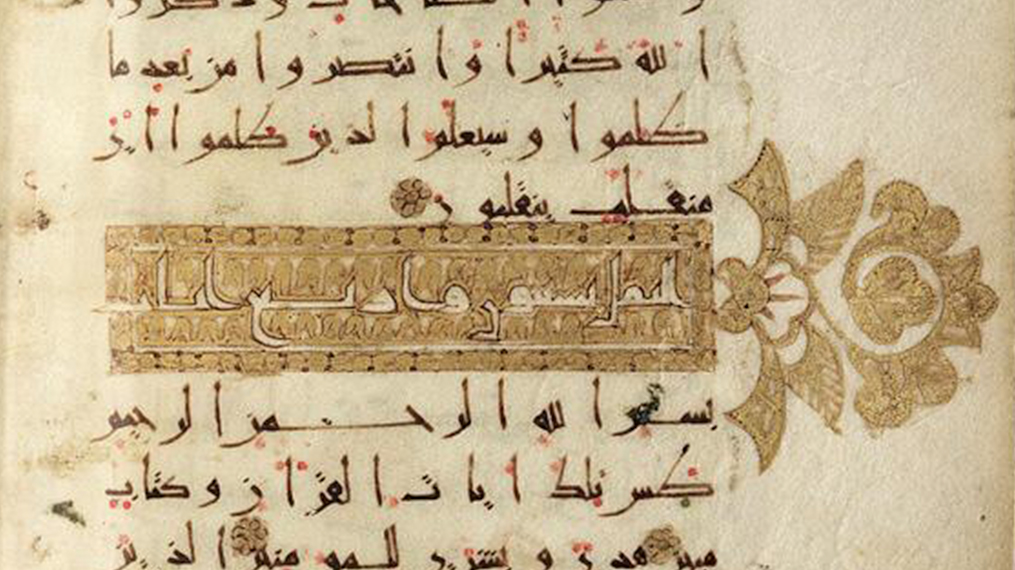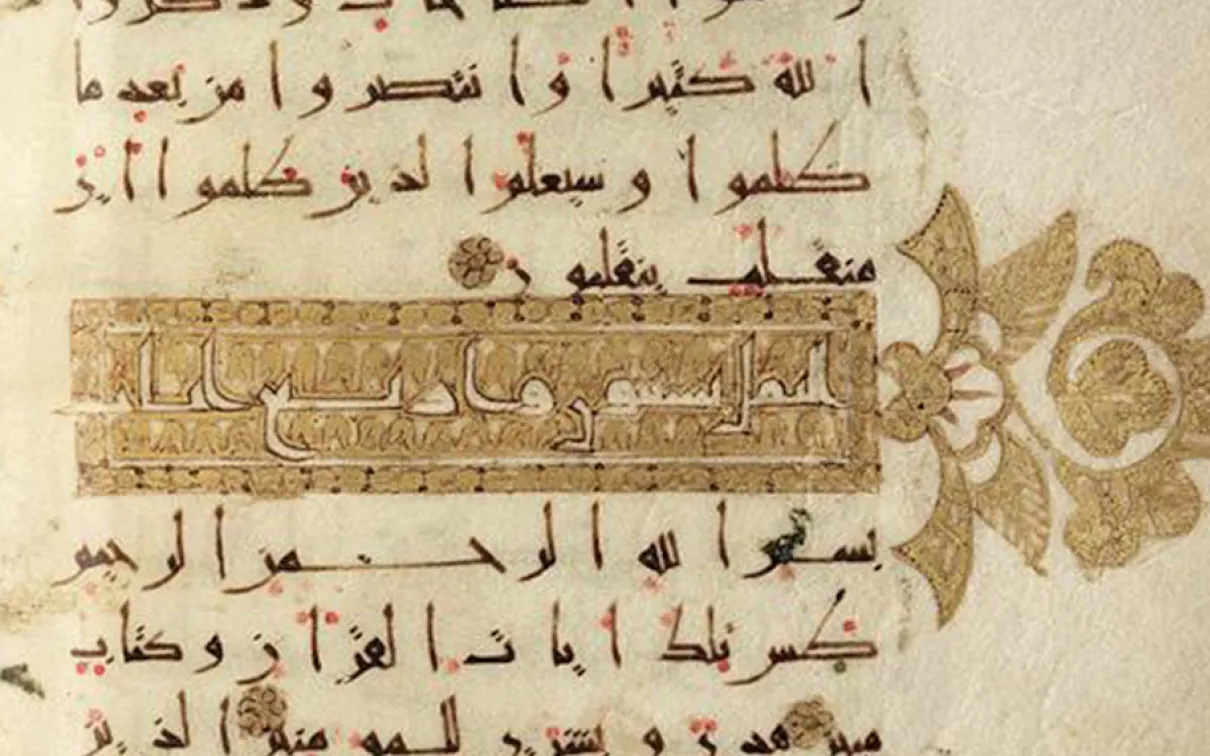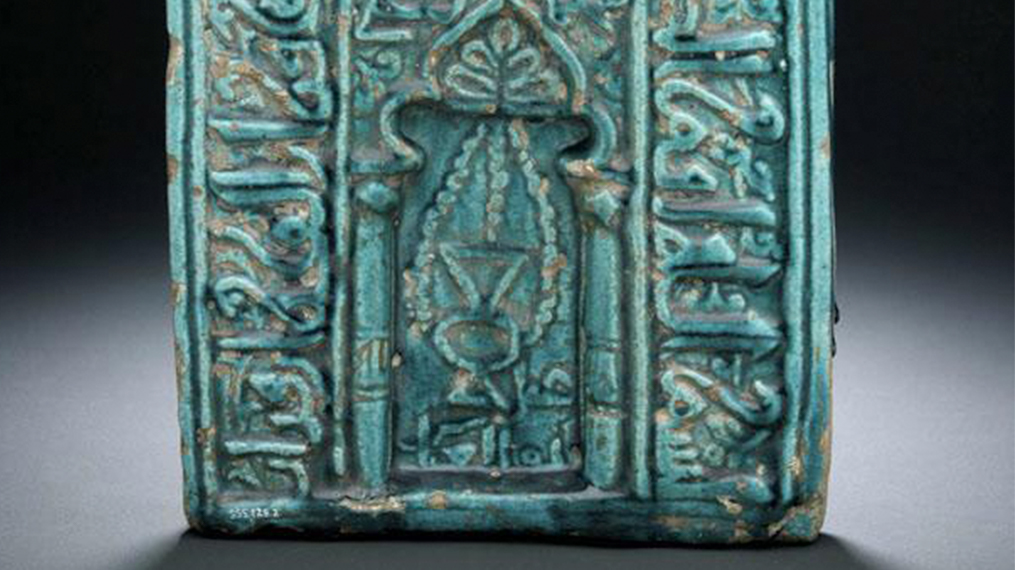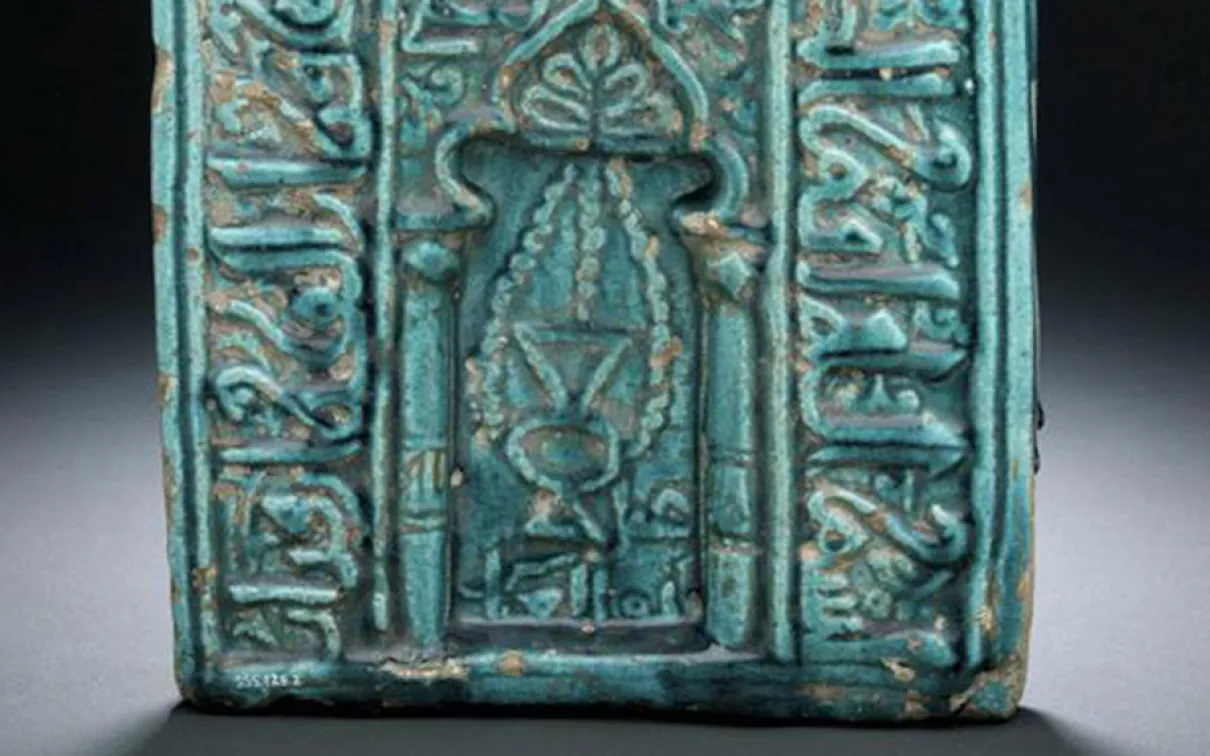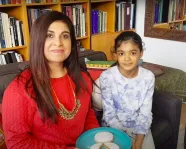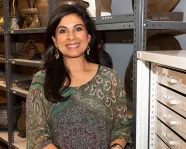Ramadan at the ROM
Category
Audience
Age
About
Happy Ramadan everyone! My name is Fahmida Suleman and I am the Curator of Islamic Art & Culture at the ROM. As we approach the end of Ramadan, I wanted to share some of my favourite objects in the Museum’s collection that relate to this special month for Muslims around the world.
Considered the holiest month of the year, during which time many Muslims fast from sunrise to sunset – no food or drink for the whole day, Ramadan is also a time for self-examination, increased religious devotion and a chance to broaden one’s compassion for the less fortunate.
Ceremonial Objects
This beautiful ceramic bowl from medieval Iran was made during Ramadan and would have been a cherished object in the home, taken out on special occasions. Perhaps it was filled with juicy dates, which were used to break the fast each evening? The bowl’s interior is inscribed with a Persian poem:
O master who has both reason and judgement in your intellect; May you forget all the world’s sorrows; Whenever you desire food; May whatsoever you eat from this bowl benefit you; May the high Heavens bow to your wishes; May you not be harmed by the evil eye. And that was written in the blessed month of Ramadan, of the year 729 Hijri (i.e. July 1329 AD).
The bowl is hand-painted with a central geometric interlaced design with flowers and radiating patterned bands in cobalt blue, turquoise, dark purple and black pigments under a transparent glaze.
The tradition of lighting a lantern during Ramadan is thought to have originated in medieval Egypt and is a custom that continues in the present day in many Islamic countries.
To make your own Ramadan lanterns, crafts or Eid greeting cards try these links:
- DIY Ramadan Lantern
- How to make a Ramadan fanoos
- How to make greeting card for Ramadan
- 99 Creative Eid Projects
While we don’t have a modern Ramadan lantern in the collection yet, the ROM has an abundance of medieval handcrafted ceramic oil lamps from the Middle East such as this slipper-shaped example from Greater Syria (i.e. Bilad al-Sham, which included modern Syria, Lebanon, Jordan and Palestine). It is inscribed in moulded-relief with an Arabic blessing: ‘Perpetual glory and prosperity to its owner’.
A playful example of an oil lamp from medieval Egypt is this green lead-glazed mouse lamp with its curled tail forming the lamp’s handle.
Ceremonial Objects
A Time for Self-Reflection and Prayer
The Qur’an plays an extremely important role during Ramadan as Muslims are encouraged to read or recite the entire Qur’an during this special month, section (juz’) by section each night. The most sacred night of the month of Ramadan is called Laylat al-Qadr – ‘The Night of Power’ – which commemorates the night the Prophet Muhammad received the first of many messages or divine revelations of the Holy Qur’an from God through the Angel Gabriel in the year 610 AD. Laylat al-Qadr falls within the last ten days of Ramadan and many Muslims stay awake the entire night to meditate, pray and read sections of the Qur’an.
This is one of many Qur’an manuscripts in the ROM’s collection, produced by a skilled calligrapher and illuminated with gold pigment on paper. The manuscript comprises the 7th part of a Qur’an made in 10 parts. The style of the elegant Arabic calligraphy in dark brown ink is called ‘Eastern Kufic’, which is characterised by letters with long upright strokes and short strokes inclining to the left. The red and green dots help with pronunciation and the small gold rosettes separate individual verses. On this page, the title of the next chapter, Surat al-Naml or ‘Chapter of the Ant’, is illuminated in gold with a decorative vegetal flourish in the margin.
The ‘five pillars’ of Islam are the basic religious duties of all Muslims: (1) the belief in one god, Allah, and in Muhammad as God’s prophet, (2) prayer, (3) charity, (4) fasting and (5) pilgrimage. Muslims pray in the direction of the Ka‘ba in Mecca and a prayer niche (mihrab), such as the one shown here, is used within a mosque or other religious building to indicate the direction of prayer.
This ceramic tile would have been part of a larger mihrab wall and includes a verse from the Qur’an (Surat al-Isra, ‘Chapter of the Night Journey’, verse 78), which encapsulates the pillar of prayer: ‘Establish regular prayers from the sun’s decline till the darkness of the night, and the morning prayer and reading: for the prayer and reading in the morning carry their testimony.’
A Time for Celebration
Ramadan ends when the first crescent of the new moon in sighted, marking the start of the month of Shawwal. Eid al-Fitr (Festival of Fast Breaking) is a major religious holiday to celebrate the end of the holy month.
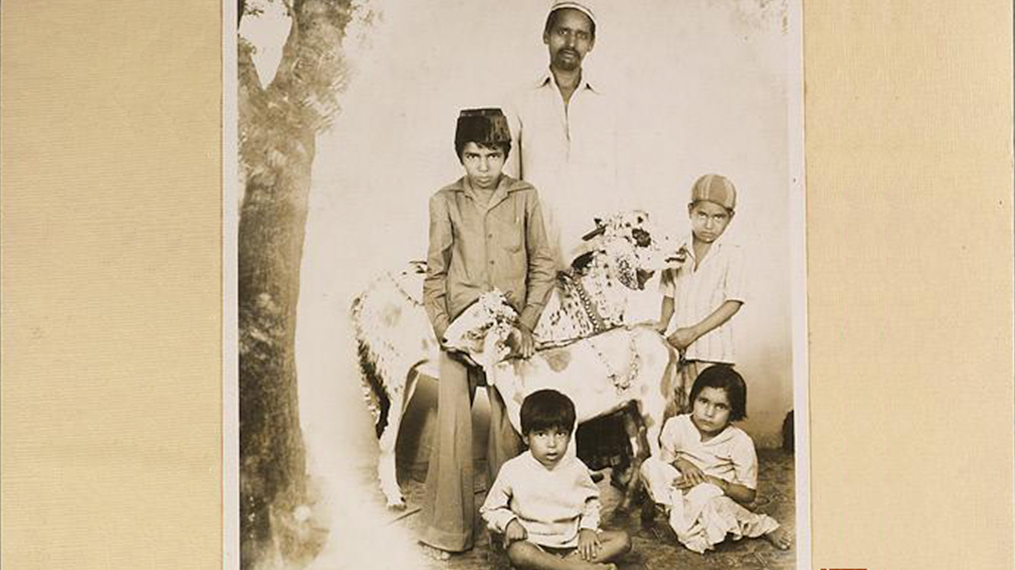
This family studio portrait was likely taken during Eid to commemorate this important Muslim holiday. It is a composite of two different negatives that have been exposed on the same photographic paper, resulting in a seamless print. The image features a father with his four children and two decorated goats framed by a large tree. Traditionally, goats are ritually slaughtered for Eid and the meat is shared among family, friends and the needy.
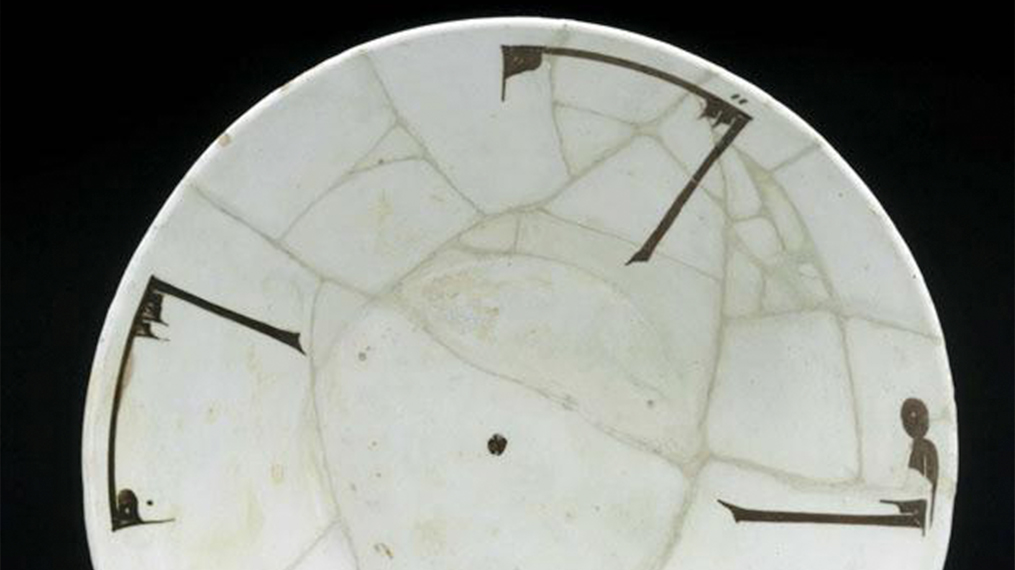
We at the ROM wish everyone fasting during Ramadan a blessed and spiritually uplifting month. This final object from the collection sums up our best wishes to you and your families when you break your fast each night. Inscribed in black Arabic script on a stark white background, this ceramic bowl reads: ‘Eat that which is nourishing’. Ramadan Mubarak to one and all!
For more information about the development of Arabic calligraphy and Qur’an manuscripts visit the British Library’s blog.
